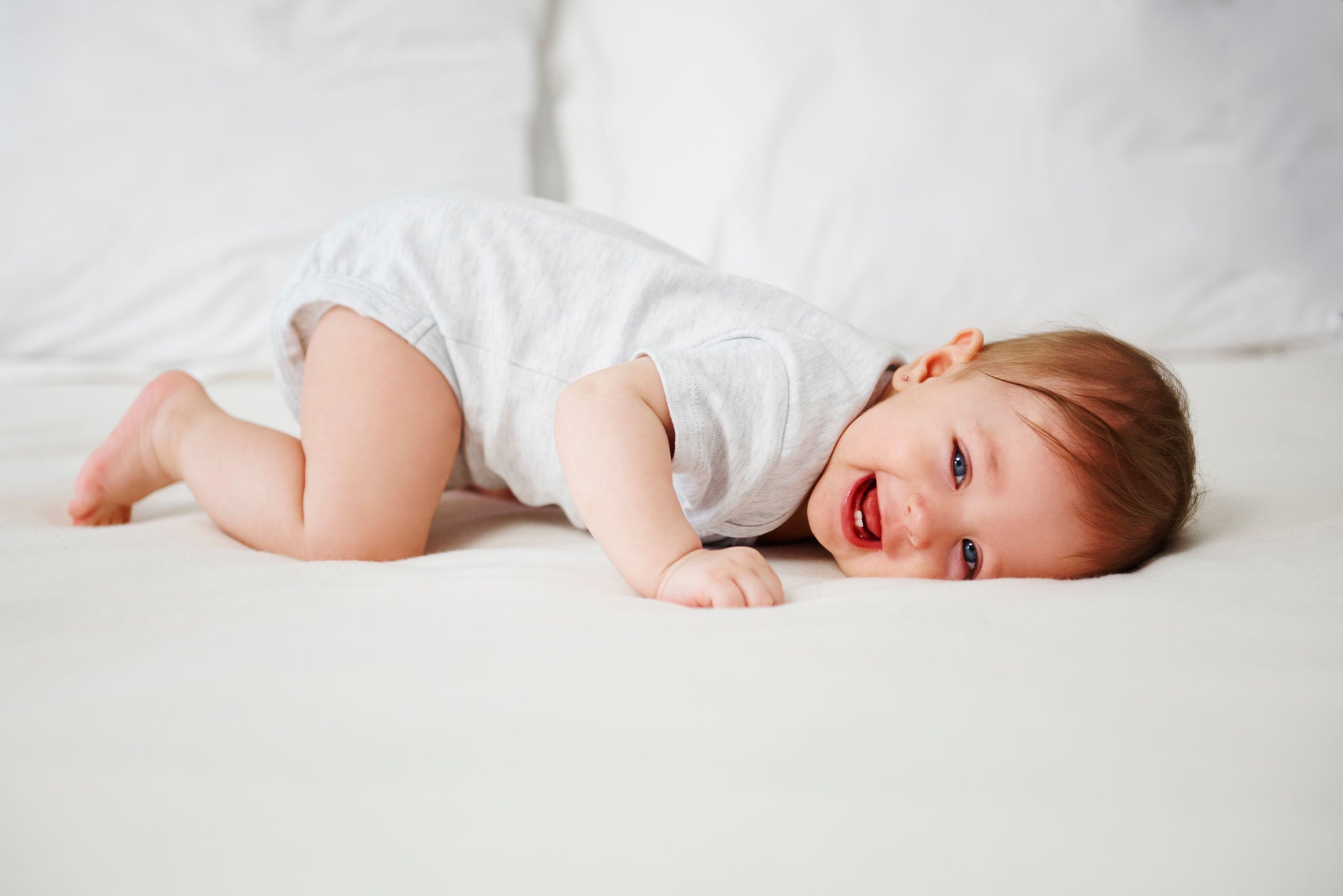Tips and Techniques for Brushing Your Baby’s Teeth
One of the most wonderful things about babies is that everything about them is so small and adorable. Those wee toes. That little nose. Those tiny teeth!

Parents are always focused on taking excellent care of their young ones, and especially at this formative early stage. It’s common to wonder about what the best techniques and approaches are for tooth-brushing and oral care at a time where the teeth are just starting to arrive (and even before!).
There’s no need to wonder. Read on for the full scoop on brushing your baby’s teeth and setting them up for a lifetime of excellent oral health!
Oral care for babies (age 0-2): frequently asked questions
For the purposes of this article, when we refer to babies we are referencing the range from newborn child up to age 2.
You can learn more about oral care for children of all ages, including kids (2+) and juniors (6+), in our article: How and when to brush my child’s teeth.
Focusing specifically on babies, here are a few answers to common questions that parents have:
The first teeth to erupt are typically the lower central incisors, followed by the upper central incisors. With these four teeth, babies can begin to practice biting and chewing more solid foods.
Baby teeth start coming in between 6-12 months of age. The exact timing within this window is different for every child and even often varies between siblings.
It’s a reasonable question, because – as you are probably aware – a baby’s first set of teeth are not permanent. These are called “milk teeth” and can be considered placeholders for the eventual permanent teeth. Children typically start to lose their milk teeth and receive permanent teeth around the age of 6. In spite of this, it is still critically important to brush and care for your child’s milk teeth as soon as they erupt! This will prevent bacteria and plaque from forming, which can lead to cavities. Left unchecked, these cavities can eventually cause issues in permanent teeth located underneath them. Due to having relatively thin enamel, milk teeth are actually more fragile and prone to decay than adult teeth, increasing the urgency of proactive oral care at this stage.
It is advisable to get into a habit of gently brushing the baby’s gums beginning shortly after they are born. This accomplishes a few different things:
- Helps keep the baby’s gums clear from harmful bacteria.
- Gets the baby accustomed to oral care and tooth-brushing.
- Proactively protects those first teeth as they start to erupt (it’s not always obvious when this is happening).
To brush the baby’s gums, we recommend using a piece of gauze soaked in lukewarm water or physiological saline solution at this stage. A rubber or silicone finger brush may also be effective. Make this a ritual after feedings. Once the teeth arrive, you can begin using a specialized toothbrush for babies.
There is some debate around this topic in the dental professional community, but at SUNSTAR GUM®, our position is that as soon as the first tooth erupts, parents are advised to use fluoride toothpaste formulated for babies and toddlers in an amount equal to the size of a grain of rice.
This specially formulated toothpaste contains a reduced amount of fluoride to ensure your child is safely getting that additional mineralization.
Use of fluoride toothpaste may begin as soon as the first tooth erupts.
The National Health Service recommends introducing your baby to the dentist as soon as their first milk tooth appears. “This is so they become familiar with the environment and get to know the dentist. The dentist can advise you on how to prevent decay and identify any oral health problems at an early stage. Just opening up the child's mouth for the dentist to take a look at is useful practice for the future.”
How to brush your baby’s teeth
Now that we’ve established some core fundamentals for a baby’s oral care, let’s explore some tips for brushing those tiny teeth once they begin to erupt along the gum line. Starting from the very first tooth, here are some best practices to follow:
- First, you’ll want to get your baby into a comfortable position for the tooth-brushing. We recommend sitting the baby on your knee with their head resting on your chest.
- Use a specially adapted toothbrush – ideally one with soft bristles and a small head that can easily fit into and maneuver around the little one’s mouth. Baby toothbrushes with longer handles will make it easier for the parent to firmly grip and apply.
- Gently brush each of the baby’s teeth in a delicate circular motion.
- Practice brushing twice per day: once after breakfast and once before bed. The latter is especially important because bacteria are able to grow most actively overnight.







